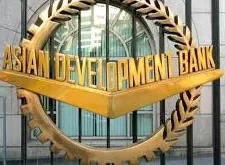
Aftab Maken
ISLAMABAD: Pakistan’s economy is demonstrating clear signs of stabilization and recovery. This positive assessment comes on the back of significantly improved fiscal performance, a notable current account surplus, and a dramatic decline in inflation – developments that collectively point toward a more stable macroeconomic environment as the fiscal year draws to a close.
During the first nine months of FY2025, robust revenue collection outpaced expenditure, successfully narrowing the fiscal deficit to 2.6 percent of GDP from last year’s 3.7 percent. This improvement was bolstered by a 68 percent surge in non-tax revenues – mainly from SBP profits, petroleum levies, and dividends – alongside a 26.3 percent increase in FBR collections, bringing total revenue to Rs. 13,367 billion. Simultaneously, expenditure growth was contained at a moderate 19.4 percent. Consequently, the primary surplus more than doubled to Rs. 3,468.7 billion, equivalent to 3 percent of GDP.
The external sector provided further positive news. The current account registered a surplus of $1.9 billion for July-April FY2025, a significant reversal from last year’s $1.3 billion deficit during the same period. Exports rose by 6.8 percent to $27.3 billion, supported by strong performances in textiles, including garments and knitwear. Remittances also surged impressively by 30.9 percent to $31.2 billion, predominantly driven by inflows from Saudi Arabia and the UAE.
In a stark contrast to earlier inflationary pressures, prices have cooled significantly. Headline inflation plummeted to a record low of 0.3 percent in April 2025, a sharp decline from the 17.3 percent recorded a year earlier. Month-on-month inflation also fell by 0.8 percent. This disinflationary trend, largely attributed to lower food prices and reduced costs in transport and utilities, enabled the central bank to cut its policy rate by 100 basis points to 11 percent earlier this month.
Agriculture, a cornerstone of the economy, benefited from focused policy support during the Rabi season. Wheat cultivation covered 22 million acres, with an estimated output of 29 million tonnes. Credit disbursement to the agriculture sector increased by 15 percent, and fertilizer offtake also rose, setting a promising foundation for the upcoming Kharif season.
However, large-scale manufacturing (LSM) presented mixed results. While sectors such as textiles, apparel, beverages, and pharmaceuticals posted gains, overall LSM output contracted by 1.5 percent during July-March FY2025. The auto sector nonetheless remained a bright spot, with production of cars, trucks, and jeeps registering double-digit growth. Cement exports also saw a notable increase of nearly 29 percent, despite a fall in domestic demand.
Foreign direct investment (FDI) experienced a slight dip to $1.8 billion. Key inflows originated from China, the UK, and Hong Kong, with sectors like financial services, energy, and oil and gas exploration attracting the most investment.
Meanwhile, the Pakistan Stock Exchange came under pressure in April due to geopolitical tensions with India, though the market has initiated a recovery in May. The KSE-100 index lost over 6,400 points in April but remained resiliently above the 111,000-point mark, reflecting cautious investor optimism.
On the social welfare front, the government disbursed Rs. 409.4 billion through the Benazir Income Support Programme (BISP), an almost 29 percent increase from the previous year. Interest-free loans under the Pakistan Poverty Alleviation Fund continued, with nearly 21,000 loans disbursed in April alone.
In a significant step towards sustainable development, the government launched its first-ever Green Sukuk. This initiative, coupled with ongoing climate finance efforts like the IMF’s Resilient and Sustainable Facility, underscores Pakistan’s commitment to fostering a green and resilient economy.
As Pakistan moves towards the end of FY2025, these developments collectively offer a cautiously optimistic picture—one where sustained macroeconomic discipline, robust social support, and a dedicated focus on sustainability are beginning to yield tangible positive results.
 BeNewz
BeNewz




